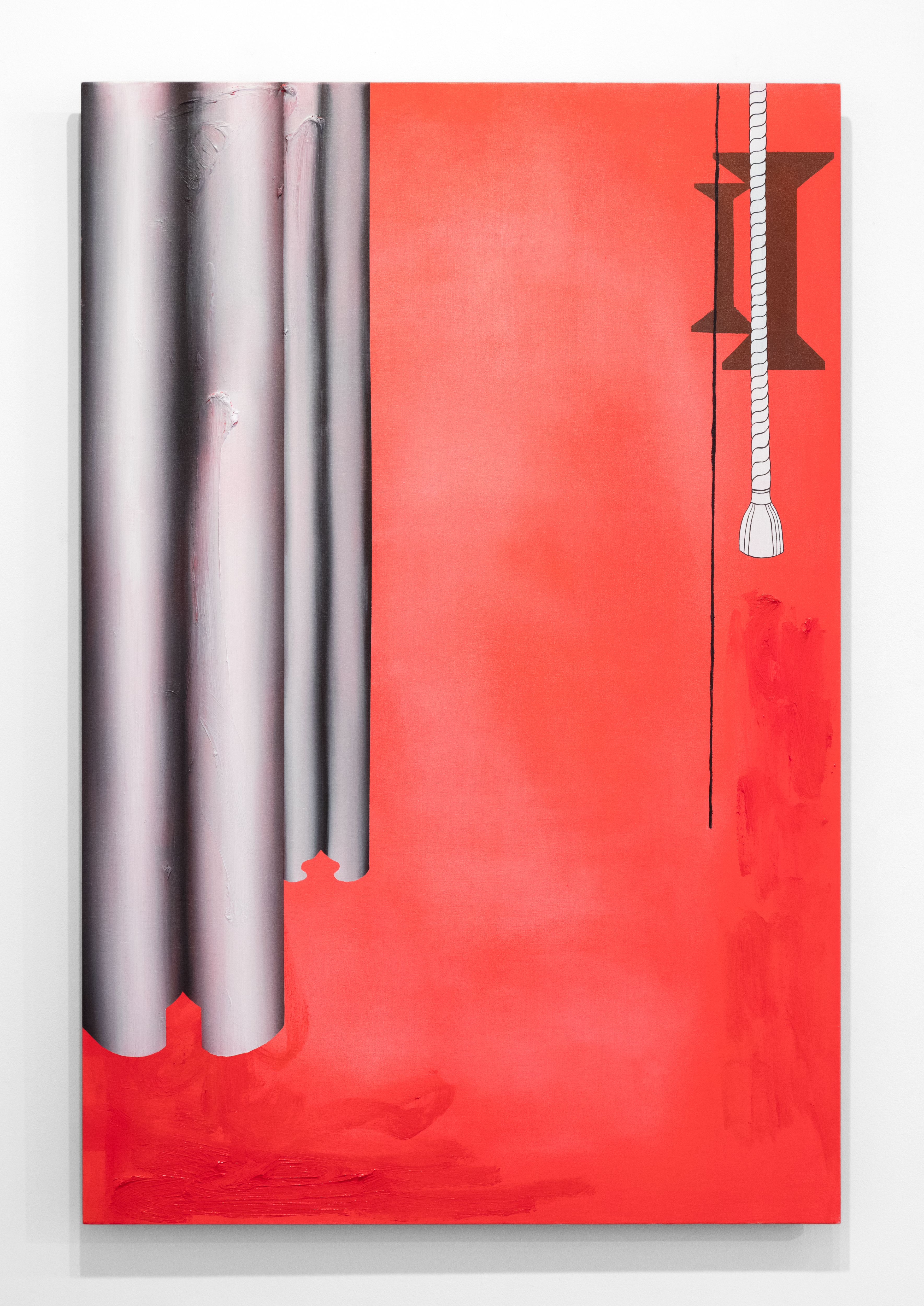Sonia Almeida’s recent paintings are in a constant state of pictorial oscillation. In both large and small-scale works, there is a battle between imagery that is planned and those that are unconscious: images that creep to the surface during the act of painting, creating a tension between the rational and the irrational. As with much of her work there is a strong engagement with the mechanics of communication, how, for instance, linguistic and visual sign systems imbricate one another. She takes as her starting point face-to-face interaction, which is also akin to how a viewer relates to a painting. In particular, Almeida is interested in how gestures predicate speech, just as other kinds of gestures define a painting. One is found in the face or in the body, the other in hand, the instance of a brush being dragged across the surface. These gestures code one’s response: the twirl of hair, the wave of a hand, smooth pulls of paint, or violent scratching in the canvas. Much of this is apparent in the triptych cupping the hand behind the ear (2016), in which each panel at once obscures as well as bleeds into the other. The panel’s communicate with each other, and even suggest a kind of sound emanating from the largest one. Almeida likes how cupping one’s hand behind an ear is at once an attempt to better hear, as well as an exhortation to make more noise. The duality of meaning is at the core of the triptych: communication on the verge of breakdown, resuscitated through context and the continual effort of interpretation.
The act of making and the structuring of a painting—what goes where, what takes precedent—is a self-reflexive motif that courses through all of the works. Almeida is not merely thinking about the indexicality of an artist’s touch, but more about cognitive and phenomenological concerns: the core relationship between thought and feeling. This is nowhere more evident then in Predictive Action (2016), and how the outlines of two entangled and curious hands rest atop the floating outlines of a grid and the hazy backdrop of a pictorial ground. Almeida also engages the past, especially late gothic reliefs and the curious way they are fundamentally sculptures but also function like paintings. Almeida is struck about their emphasis on resolution and how things meant to be seen are carved in detail and placed in the foreground, while those deemed less important are rendered less precisely and pushed to the margins. In different ways this theme shows up in Relief Ribbons (2016), Relief 3D (2016), and Kneeling Sculpture (2016). In all of the works there are multiple dialogues taking place, awaiting a viewer to come and take up the conversation.












































































































